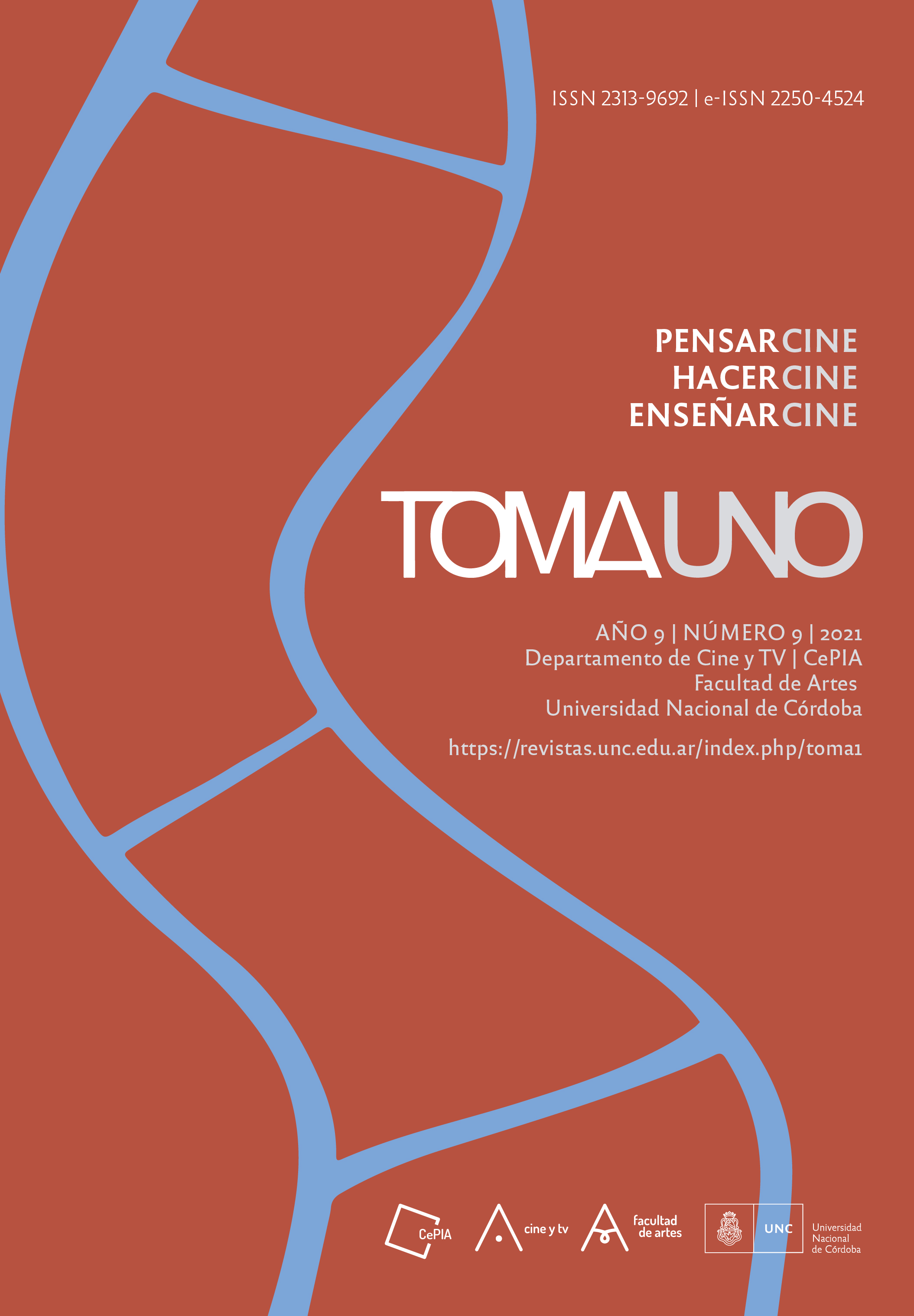The uprising configuration and the political function of the images in the movie Rat Fever (Claudio Assis, 2011)
DOI:
https://doi.org/10.55442/tomauno.n9.2021.35787Keywords:
brazilian cinema, politics of images, realism, uprisingAbstract
This essay analyzes the film Rat Fever (Cláudio Assis, 2011), from the configuration of uprisings, actions of political resistance of socially marginalized characters who campaign against the conservative and oppressive discourse of rulers, police and military, in Recife (Pernambuco, Brazil). The discussion contemplates the politics of images, contextualized in the conception of realistic aesthetics, to discuss their meaning in the film's plans, considering the work of thinking about the form and relating it to the feelings evoked in its reception. This is not limited to identifying the modes and resources used in its production, but rather evaluating its political function. The aesthetic and political assumptions of realism are used, situating cinematic movements, such as Italian neorealism and its influences in Cinema Novo, to relate this production in its dialogues with the proposal of militant cinema. In this path, we seek to identify, from a historical perspective, the intersections between marginalized characters, uprising, image politics, realistic aesthetics, cinematic movements, the popular and militant cinema.
Downloads
References
Bazin, A. (1991). O Cinema - ensaios. São Paulo: Brasiliense.
Butler, J. (2017). Levante. In G. Didi-Huberman (Org.), Levantes (pp. 23-36). São Paulo: Sesc São Paulo.
Cavell, S. (1979). The World Viewed. Reflections on the Ontology of Film. Cambridge: Harvard University Press.
Chauí, M. (1996). Conformismo e Resistência – aspectos da cultura popular no Brasil (6 ed). São Paulo: Brasiliense.
Didi-Huberman, G. (2017). Quando as imagens tomam posição – o olho da história I. Belo Horizonte: Editora UFMG.
Didi-Huberman, G. (Org.) (2017b). Levantes. São Paulo: Sesc São Paulo.
Didi-Huberman, G. (2020). Compreender por meio da fotografia. Entrevistador: Arno Gisinger. Recuperado de
https://revistazum.com.br/revista-zum-13/compreender-por-meio-da-fotografia/.
Kojima Hirano, L. F. (2015). Branco Sai, Preto Fica: a crise da figura do mediador humano. Novos Estudos CEBRAP - 103, pp. 219-226. Recuperado de https://www.scielo.br/j/nec/a/fxD8XPwdxNWJfqvs84qXX8D/?format=pdf&lang=pt.
Kracauer, S. (1997). Theory of film: the redemption of physical reality. Princenton University Press.
Lukács, G. e Coutinho, C. N. (1991). Realismo crítico hoje (2 ed.). Brasilia, D.F.: Thesaurus.
Rancière, J. (2005). A partilha do sensível: estética e política (M. Costa Netto, trad.). São Paulo: EXO Experimental/Editora 34.
Rancière, J. (2010). O espectador emancipado. São Paulo: Martins Fontes.
Rancière, J. (2012). O destino das imagens. Rio de Janeiro: Contraponto.
Ridenti, M. (2000). Em busca do povo brasileiro – artistas da revolução, do CPC à era da TV. Rio de Janeiro: Record.
Rocha, G. (2006). O Século do Cinema. Prefácio de Ismail Xavier. São Paulo: Cosac Naify.
Varella, J. (2020). Espero Tua (Re)volta: documentário explora movimento estudantil entre 2013 e 2018 sob os olhos da juventude. Ponto-e-Vírgula, 28, pp. 142-145. Recuperado de
https://revistas.pucsp.br/index.php/pontoevirgula/article/view/51461/34508.
Xavier, I. (2000). O cinema brasileiro dos anos 90. São Paulo: Praga, n. 9, jun.
Xavier, I. (2005). O discurso cinematográfico. A opacidade e a transparência. Rio de Janeiro: Paz e Terra.
Assis, C. (Dir.) (2011). A febre do rato [largometraje]. Brasil.
Café, E. (Dir.) (2017). Era o hotel Cambridge [largometraje]. Brasil.
Capai, E. (Dir.) (2019). Espero sua (re)volta [largometraje]. Brasil.
Mendonça Filho, K. (Dir.) (2019). Bacurau [largometraje]. Brasil.
Pereira dos Santos, N. (Dir.) (1963). Vidas Secas [largometraje]. Brasil.
Queirós, A. (Dir.) (2014). Branco sai, preto fica [largometraje]. Brasil.
Rocha, G. (Dir.) (1964). Deus e o Diabo na Terra do Sol [largometraje]. Brasil.
Published
Issue
Section
License
LicenseThis work is licensed under Creative Commons Attribution-NonCommercial-NoDerivs 2.5 Argentina .


































